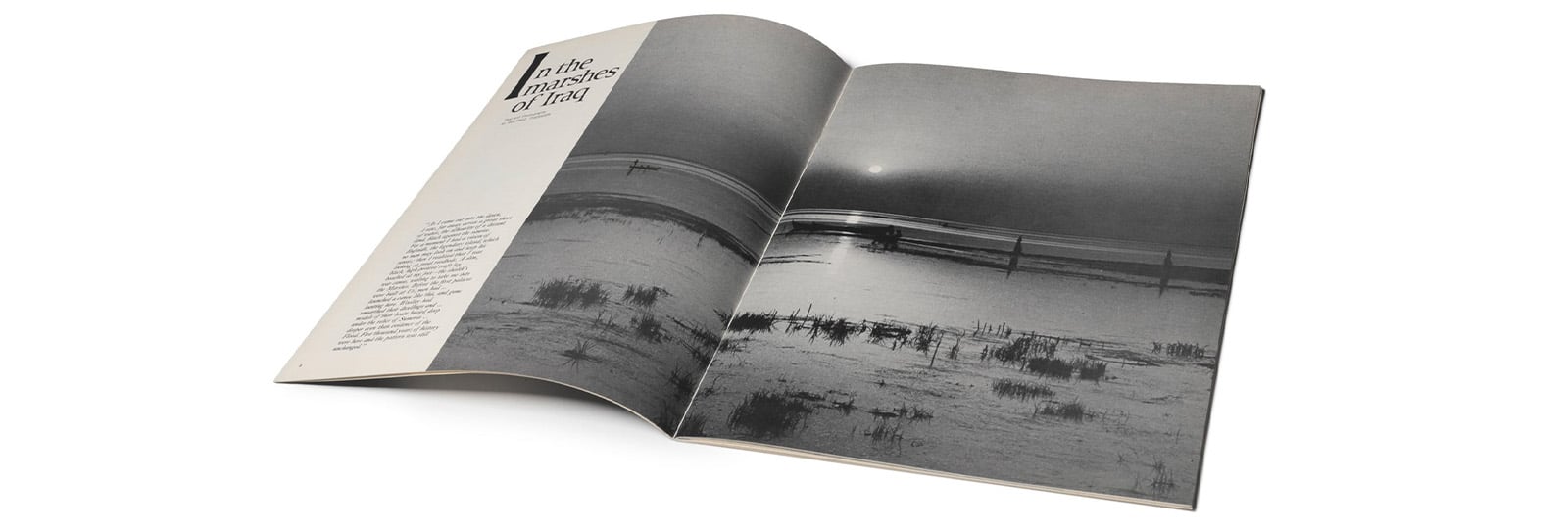
FirstLook: "In the Marshes of Iraq"
- Arts
- History
- Photography
1
Photograph by Wilfred Thesiger
November/December 1966
As we celebrate the 75th anniversary of AramcoWorld this year, we are looking back at some of the memorable and visual story spreads in the magazine. In the past, AramcoWorld has written about the cultural impact of a simple reed hut like those in the marshes of Iraq and built recently in Houston, Texas. That journey really began in 1964, with the publishing of Wilfred Thesiger’s book The Marsh Arabs. His travelogue connected the world to a culture and people few had known or experienced. AramcoWorld amplified that connection in the November/December 1966 issue with the story "In the Marshes of Iraq."
“… then I realized that I was looking at great reedbeds. A slim black, high-prowed craft lay beached at my feet—the sheikh’s war canoe, waiting to take me into the Marshes. Before the first palaces were built at Ur, men had … launched a canoe like this and gone hunting here. … Five thousand years of history were here and the pattern was still unchanged.”
— Wilfred Thesiger, The Marsh Arabs
You may also be interested in...

FirstLook: Ramadan’s Lanterns
Arts
In the March/April 1992 issue, writer and photographer John Feeney took AramcoWorld readers on a walk through the streets of Cairo during Ramadan.
All the Lands Were Sea
History
Arts
In late 1967, photographer Tor Eigoland traveled for more than: a month, mostly by canoe, among the countless villages of southern Iraq's vast marshes. Now, 45 years later, writer Anthony Sattin calls his photographs a "rare and ethnographic record of a lost world. They bring us back to a time and place where people lived in harmony with their environment and respected the balance the natural world needs to thrive.'
FirstLook: Duet
Arts
“Duet” comes from the Latin root word duo which means two. The Duet series focuses on double portraits, a tradition in West Africa.